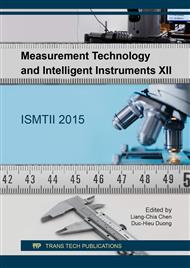p.126
p.135
p.141
p.147
p.153
p.159
p.164
p.173
p.179
Metrology Performance of Laser Line Scanning of Additive Manufacturing Fixtures Based on Geometrical Product Specification (GPS)
Abstract:
To gain a maximum benefit of high-speed optical scanning in the metrological calibration of emerging AM (Additive Manufacturing) fixtures it is necessary to investigate the metrology performance of laser line scanning in particular on coordinate measuring machines (CMMs) based on new generation of Geometrical Product Specification standard. A set of designed experiments was set up both on an actual fixture and artefacts manufactured by the Additive Manufacturing company, Materialise-RapidFit+. It enables to identify the influence of a fixture’s geometrical characteristic, material, colour, transparency and roughness, as well as of the alignment of the part coordinate system (PCS) mathematically relating to the machine coordinate system (MCS). Performance measures that were tracked included inspection accuracy, measuring repeatability and time consumption. Results demonstrate that the laser line scanning strategy enables to lower the time consumption in the order of 49% for a fixture with six locators mounted on it and a PC with 128GB RAM, especially providing a superior accuracy performance for complex geometries compared to a tactile measuring strategy.
Info:
Periodical:
Pages:
153-158
Citation:
Online since:
September 2017
Authors:
Price:
Сopyright:
© 2017 Trans Tech Publications Ltd. All Rights Reserved
Share:
Citation:


